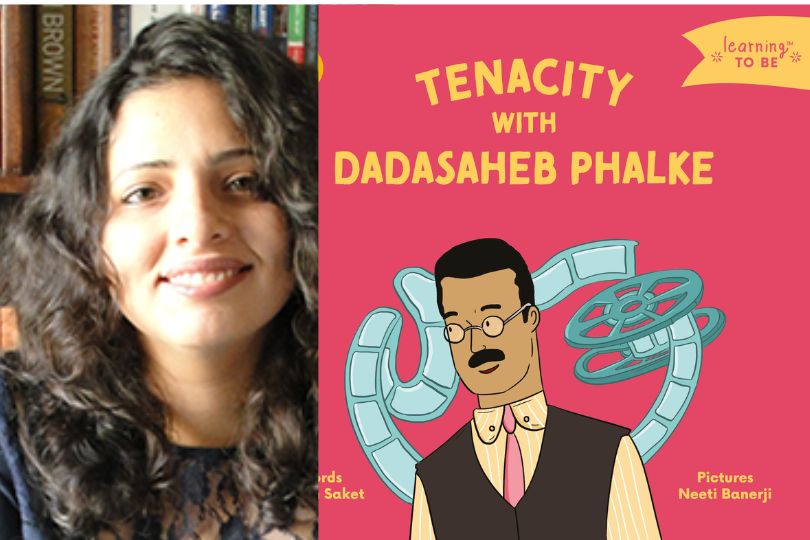Interview with Pervin Saket, author of “Tenacity with Dadasaheb Phalke”
The graphic timeline is meant to help parents understand Phalke's life when they read the book aloud to their children.on May 23, 2023

Pervin Saket is an award-winning poet who won the Srinivas Rayaprol Poetry Prize 2021, one of India’s leading English language poetry competitions. She is the author of Urmila, the retelling of a mythical tale of love and longing, and the poetry collection, A Tinge of Turmeric. She is the 2021 Fellow for the Vancouver Manuscript Intensive, mentoring young international authors. Her novel has been adapted for stage performances and dance recitals. Her work has been extensively featured in The Indian Quarterly, The Joao-Roque Literary Journal, Paris Lit Up, Singapore Unbound, Usawa Literary Review, Tiferet, etc. Pervin is a school textbook editor, poetry editor, and co-founder of the Annual Dum Pukht Writers’ Workshop.
Frontlist: What inspired you to choose Dadasaheb Phalke as the subject of your book on tenacity?
Pervin: While putting together this series for Adidev Press, I wanted some of the books to focus on the performance arts. I particularly wanted to celebrate artists and performers from India, and what better way to start than the man who founded Indian cinema?
Frontlist: How important do you think it is for children to learn about historical figures like Dadasaheb Phalke, particularly in the context of South Asian history and culture?
Pervin: Growing up, I rarely encountered relatable characters from South Asian backgrounds. We had mythological books, of course, but the sense of someone living and breathing our times was absent. This gave me the impression that most cool things happened in the West. Their music was cool, their pop stars were cool, and their movies were cool. (Much later did I discover — and I am still fascinated by — Bharata Nuni's 'Natya Shastra' and the South Asian aesthetic of the Rasa theory.) Books on Dadasaheb Phalke and other Indian artists will help children realize that there are other schools of thought and other artistic sensibilities too.
Frontlist: The book features a graphic timeline of Dadasaheb Phalke's life. How did you decide which events to include on the timeline?
Pervin: The graphic timeline is meant to help parents understand Phalke's life when they read the book aloud to their children. The events included in the timeline are closely linked to the poem that runs through the book.
Frontlist: "Tenacity with Dadasaheb Phalke" is targeted at young children, but what do you think older readers can gain from reading it as well?
Pervin: The best children's books are those that can be enjoyed by adults as well. I hope older readers can appreciate the spirit of experimentation and discovery that Phalke embodied. He was always looking to try something new, develop a new skill, and work on something that had never been done before, at least in India. He wasn't afraid of his own curiosity.
Frontlist: How did you approach the challenge of presenting complex historical and cultural concepts in a way that would be accessible to young readers without oversimplifying?
Pervin: The simplification was a matter of presentation rather than ideas. I do not agree with the approach of 'dumbing down' something because children will read it — in fact, the title itself uses the word 'tenacity,' which is quite a complex idea. I used rhyming verses to make the language more accessible. The illustrations also explain some of the more complex ideas and developments. And finally, the goal is to have the perfect balance between ancient knowledge and new knowledge. I worked towards making sure most of the book had familiar words, but occasionally, the child can come across something new and fresh, sparking their curiosity.



.jpg)






.jpg)

.jpg)
.jpg)
.jpg)
.jpg)
.jpg)










Sorry! No comment found for this post.